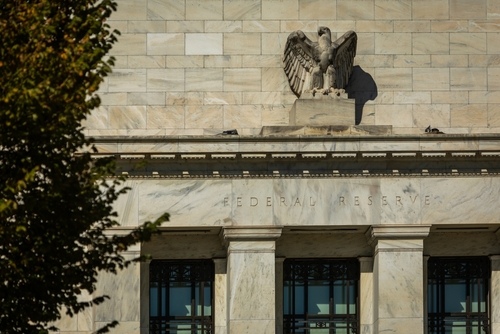First Hawaiian Posts Q2 Profit Beat


Key Points
- GAAP earnings per share of $0.58 in Q2 2025 exceeded analyst expectations by $0.09.
- Revenue (GAAP) rose to $217.5 million, beating estimates.
- Non-performing assets rose to $28.6 million, while the company maintained strong capital ratios and continued share buybacks and stable dividends.
- These 10 stocks could mint the next wave of millionaires ›
First Hawaiian (NASDAQ:FHB), the largest full-service bank headquartered in Hawaii, released its Q2 2025 results on July 25, 2025. The company reported GAAP earnings per share of $0.58, outpacing analyst estimates of $0.49 (GAAP). Revenue (GAAP) reached $217.5 million, also topping expectations, with both GAAP EPS and revenue exceeding analyst estimates. The quarter was marked by notable improvements across key profitability measures, tight expense control, and a continued strong capital position. However, there are signs of rising non-performing assets, a trend the bank and analysts are watching closely. Overall, the results were better than expected and reflect continued operational execution from the bank.
Metric | Q2 2025 | Q2 2025 Estimate | Q2 2024 | Y/Y Change |
|---|---|---|---|---|
Diluted EPS | $0.58 | $0.49 | $0.48 | 20.8% |
Net Interest Income | $163.6 million | N/A | $152.9 million | 7.0% |
Revenue | $217.5 million | $213.96 million | $204.6 million | 6.3% |
Efficiency Ratio | 57.2% | N/A | 59.2% | (2.0) pp |
Return on Average Tangible Assets (Non-GAAP) | 1.28% | N/A | 1.08% | 0.20 pp |
Source: Analyst estimates for the quarter provided by FactSet.
Understanding First Hawaiian’s Core Business and Strategy
First Hawaiian operates as the leading full-service regional bank in Hawaii. Its offerings span traditional retail and commercial banking, wealth management, and payment services. With $23.8 billion in total assets, the bank serves both consumers and businesses mainly across Hawaii, Guam, and Saipan.
The bank’s success relies on its deep local presence and relationship-based approach, combined with a focus on maintaining financial strength and meeting regulatory capital requirements. Recent efforts have concentrated on defending its market position, growing deposits and loans, and managing costs while investing in staff and technology. As well as adaptation to local economic conditions, these remain vital to its ongoing performance.
Key Events and Performance Drivers in the Quarter
The quarter saw First Hawaiian earn more on its assets relative to the interest paid on deposits and borrowings. Revenue also benefited from a $3.5 million sequential increase in noninterest income, reflecting contributions from services such as wealth management and card fees.
Expense control was a standout, as the efficiency ratio improved to 57.23%, down from 59.22% a year ago. Return on average tangible stockholders’ equity (non-GAAP), a key profitability metric, climbed to 17.61%. A notable one-time event was a $5.1 million benefit to income taxes from a change in the California tax code, lowering the effective tax rate to 16.9%. Capital ratios stayed well above regulatory minimums, with common equity Tier 1 at 13.03 % and total capital at 14.28 %.
Across business segments, loan growth was modest but positive, with total loans and leases at $14.4 billion as of June 30, 2025, up 0.4% from the prior quarter. Deposit balances remained stable at $20.2 billion. While residential lending and construction loans saw slight declines, the bank maintained a diversified loan book, including real estate, construction, consumer, and lease financing.
Credit quality remains sound, but with early caution signals. Non-performing assets -- or loans displaying signs of credit distress -- rose to $28.6 million, up from $18.0 million a year ago. Allowance for credit losses, measures set aside for potential loan defaults, stood firm at 1.17% of loans as of June 30, 2025, higher than 1.11% at year-end 2024. Net charge-offs, or loans that the bank does not expect to collect, totaled $3.3 million. On the shareholder front, First Hawaiian repurchased 1.04 million shares for $25.0 million and First Hawaiian continued to pay a $0.26 per-share quarterly dividend, with a payout ratio of 44.83%.
Looking Ahead: Guidance and Factors to Watch
Management did not provide explicit forward guidance for the coming quarters or full fiscal year. The company did, however, express a cautiously positive view, noting stable loan demand, steady deposits, and manageable risks.
Investors should continue to monitor asset quality trends, especially as non-performing assets have increased, and pay attention to the bank’s performance in its core Hawaii, Guam, and Saipan markets. Capital and liquidity remain strong, but management noted ongoing uncertainty in the macroeconomic and regulatory environment. The quarterly dividend was held flat at $0.26 per share.
Revenue and net income presented using U.S. generally accepted accounting principles (GAAP) unless otherwise noted.
Where to invest $1,000 right now
When our analyst team has a stock tip, it can pay to listen. After all, Stock Advisor’s total average return is 1,039%* — a market-crushing outperformance compared to 182% for the S&P 500.
They just revealed what they believe are the 10 best stocks for investors to buy right now, available when you join Stock Advisor.
*Stock Advisor returns as of July 29, 2025
JesterAI is a Foolish AI, based on a variety of Large Language Models (LLMs) and proprietary Motley Fool systems. All articles published by JesterAI are reviewed by our editorial team, and The Motley Fool takes ultimate responsibility for the content of this article. JesterAI cannot own stocks and so it has no positions in any stocks mentioned. The Motley Fool has no position in any of the stocks mentioned. The Motley Fool has a disclosure policy.






